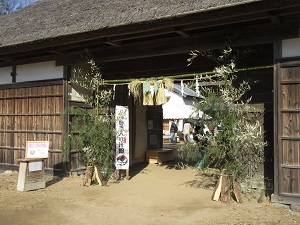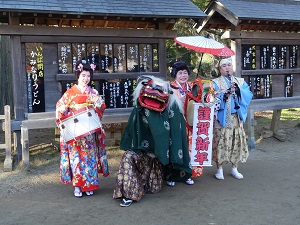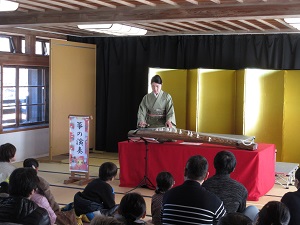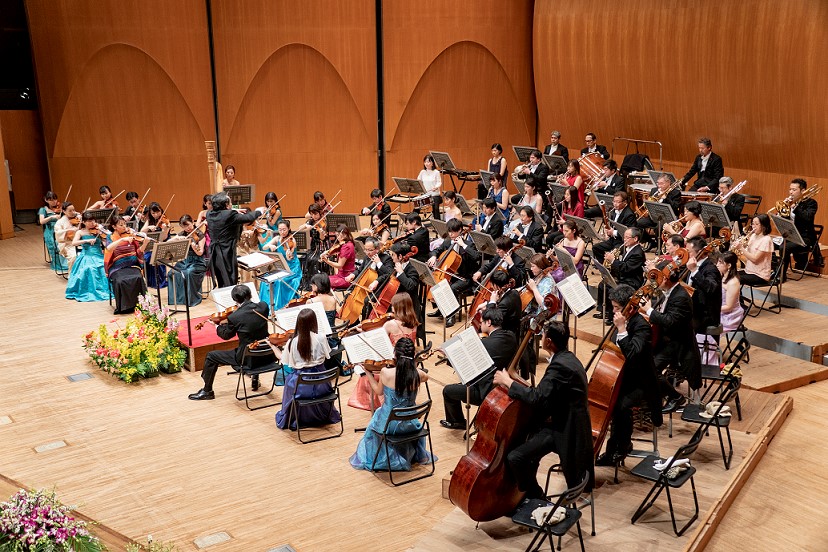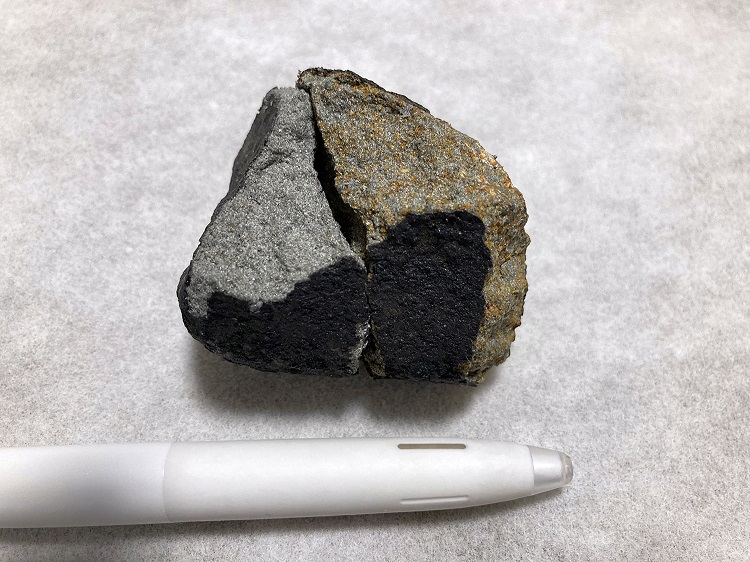Main content starts here.
Foreign Languages > Chiba International Information Square - To foreign residents - > Chiba Nanohana News > Chiba Nanohana News (Past Issues) > Chiba Nanohana News (December 2020)
Update: December 15, 2020
Chiba Nanohana News (December 2020)
Index
I. News II. Charm of Chiba III. Exhibitions and Concerts
I. News
1) Won’t you join a “Nihongo Kyoshitsu” (Japanese Class)?
The “Nihongo Kyoshitsu” is a class for foreign residents to learn Japanese. However, it isn’t just a language class nearby; it’s a place where foreign residents can gain and exchange information, connect with their local community, and consult with others about any troubles. Nihongo Kyoshitsu has become an important place in foreign residents’ daily lives. Most classes are free, but you may have to pay for lesson materials.
The teachers of these classes are volunteers. There are also some cases where the teachers are foreign residents who can already speak Japanese.
Those learning Japanese range from workers, students, their family members, the spouse of a Japanese resident, etc. Depending on the class, children are also able to participate and there are different levels available.
As of November of 2020, there are 161 Japanese classes offered in 35 municipalities.
You can find a Japanese class in your city from the Chiba International Exchange Center Homepage.![]()
For those who are interested in learning or teaching Japanese, search for the Japanese class that best suits you and join today!
- Inquiries: Chiba Prefecture International Affairs Division
- TEL:043-223-2436
2)Chiba I-CHI-BA Antenna Shop is now open in Tokyo!
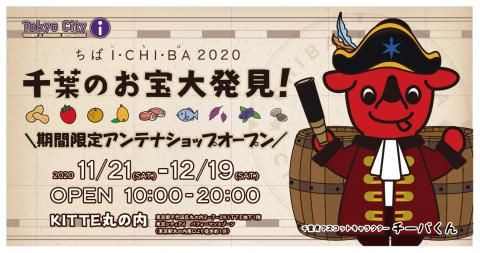
The limited-time Chiba I-CHI-BA Antenna Shop, where you can discover a variety of Chiba's attractions, is open now until December 19 in Marunouchi, Tokyo.
This year’s theme is “Chiba’s Great Treasure Discovery! Chiba’s Treasure Island.”
About 280 kinds of Chiba’s items will be available for sale such as peanuts, agricultural and fishery products, confectionaries, local sake, traditional crafts, CHI-BA+KUN goods, and more! You can watch video introductions about the listed products made by their sellers on the special website as well as access the online shop.
Chiba I-CHI-BA Special Website![]()
In addition, pamphlets and posters will be displayed about each area within the Prefecture to highlight different sightseeing and tourist attractions, along with multi-visual municipal PR campaign videos which will introduce the recommended products of each area, as well as other products and attractions of Chiba Prefecture.
You can send your purchases from the post office counters located in the shop.
<Featured Products>
Junmai Baum (Kamogawa City)
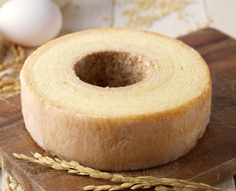
- Winner of a Gold Prize at the Chiba Food Gems Contest 2020.
- A rice flour Baumkuchen made by a rice shop that focuses on using Chiba's local ingredients such as "Nagasa-mai" rice and eggs.
Simmered Choshi Sardines (Katori City)
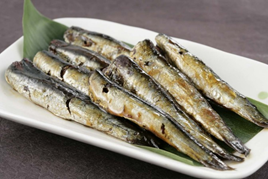
- Winner of the Fisheries Agency Commissioner’s Award at the National Fisheries Processing Food Exhibition 2020.
- These sardines are caught off the coast of Choshi and are carefully selected for sale, then simmered in Choshi’s special soy sauce.
※ COVID-19 infection prevention measures such as temperature checks, hand disinfection, and the wearing of a mask are thoroughly enforced; the shops are laid out to avoid the Three C’s.
Please come and discover Chiba's treasures!
- Event duration: Open every day from now until Dec. 19, 2020 (Sat.), 10:00 a.m. – 8:00 p.m. (closing time will be at 5:00p.m. on the last day of the event)
Venue: Tokyo City i Performance Zone
2-7 KITTE Basement 1F Marunouchi, Chiyoda-ku, Tokyo (1min walk from Tokyo station Marunouchi South Exit)
- Inquiries: Chiba Prefecture Tourism Planning Division
- TEL:043-223-2415
II.Charm of Chiba
1) Flowers of Chiba
Chiba Prefecture is ranked #2 in Japan for flower production. Now, we are entering the peak season for flowers to bloom in Chiba. It is said that if you were to circle around Chiba, you could build a flower shop because such a large variety of flowers are grown here.
The main types of flowers you can find used for cut flowers are carnations, stock flowers, and lilies, while cyclamen and begonias are mainly produced for potted flowers. Let us introduce some of these flowers grown in Chiba
Stock flowers
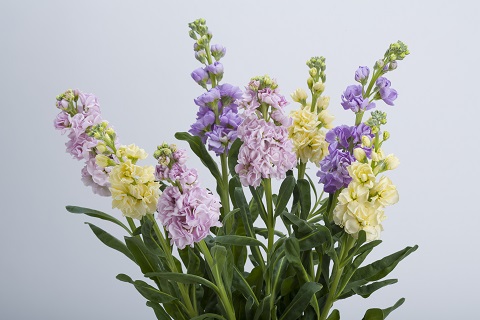
- Season: October - March
- Main area of production: Tateyama City, Minamiboso City, Kamogawa City, Isumi City, Kimitsu City
- Annual gross production for 2018: 700 million yen (#1 in Japan)
Stock flowers give off a very aromatic scent when they bloom from fall to spring and are used for cut flowers and plants for flower beds. Stock flowers come in many colors such as red, peach, white, purple, and light yellow. Produced in Europe from long ago, stock flowers first came to Japan in the Edo period. At the end of the Taisho Period, Chiba’s Awa area was the first place in Japan to produce cut stock flowers. Not only are Chiba’s stock flowers popular in Japan, they are also gaining popularity abroad.
Orchid

- Season: Year round
- Main area of production: All regions of Chiba Prefecture
- Gross production in 2018 (national ranking):
(Cut) 300 million yen (#3 in Japan)
(Potted) 2.1 billion yen (#4 in Japan)
The production of orchids in Chiba started from around 1970, and phalaenopsis, cattleya and cymbidium orchids were the center of attention. Out of all the orchid breeds, phalaenopsis orchids are treated as a luxury flower, ranging from cut flowers to potted ones, small or large petals, and are very popular for gifts.
Gerbera
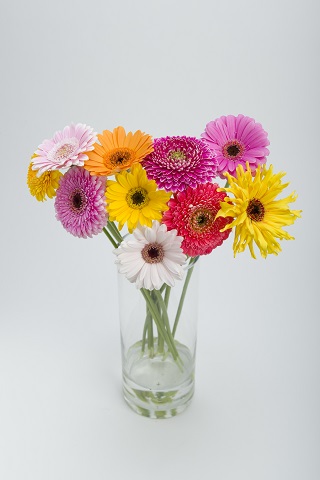
- Season: Year round
- Main area of production:Asahi City, Shirako Town
- Gross production in 2018:300 million yen (#3 in Japan)
With over 100 types of Gerbera flowers, this flower isn’t used only for bouquets; they are also used for flower arrangements and a wide variety of bridal decorations. Gerberas range from pastel to vivid colors and can be single-petalled or double-petalled, with small petals or large petals. Gerbera’s abundant varieties are the selling point for this flower.
Statice
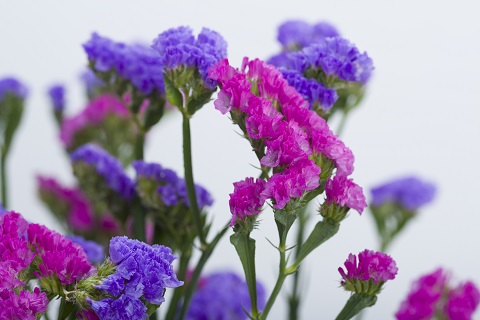
- Season: November – April
- Main area of production: Minamiboso City, Tateyama City, Kyonan Town
- Gross production in 2018: 100 million yen (#4 in Japan)
Not only is there a high demand for fresh statice flowers, but their dry flowers as well. Statice are often sold as cut flowers in flower shops. Although they come in a wide range of colors, the colored part of the plant is actually a calyx, which is a leaf that encloses the flower bud. If you look closely, you can see a small, white or yellow flower; this is the actual flower.
Carnations
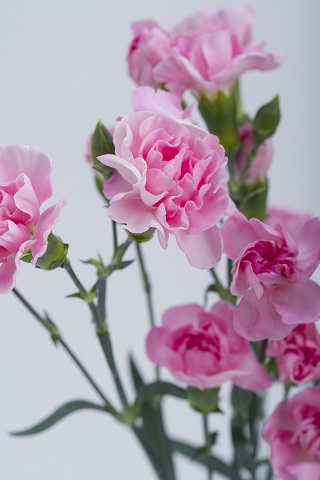
- Season: November – May
- Main area of production: Minamiboso City, Kyonan Town, Kamogawa City, Katori City
- Annual gross production: 900 million yen (#4 in Japan)
Carnations come in a wide range of varieties, from single flowers (one flower per stem) to spray flowers (several smaller flowers per stem) and also vary in color. Carnations are viewed as a symbol for Mother’s Day. Although carnations are originally from the Mediterranean Coast, it is said that they were brought over from the Netherlands to Japan in the beginning of the Edo period. It is also said that the first glass greenhouse was built in Shirahama, Chiba in 1919.
Chiba’s Seasonal Flowers Guide
III. Exhibitions and Concerts
1) “Mura-no-Oshogatsu” at Chiba Prefectural Museum "Boso-no-Mura"
|
shimekazari of the Kazusa district farmhouse |
“Oshogatsu,” the beginning of the New Year, is the most important event for Japanese people. People decorate their homes with special decorations such as “kadomatsu,” pine branches, and “shimekazari,” a sacred straw rope. Family members and relatives get together and eat traditional Japanese dishes such as “osechi” and “zoni” to celebrate the New Year.
Many people go to “hatsumode,” or one’s first visit to a shrine or temple of the year to make wishes for the New Year. Some people go out before dawn to see the first sunrise of the year from mountaintops, beaches, or high-rise buildings.
Come and experience old Japanese New Year traditions at “Mura-no-Oshogatsu,” an event which will be held at Chiba Prefectural Museum "Boso-no-Mura" on January 5 and 6. Spend the New Year celebrations in a reproduction of an Edo townscape and feel the atmosphere of old Japan!
Event goers can see a variety of “shimekazari” and “kadomatsu” decorations on display throughout a street lined with merchants’ houses, a samurai residence, and a farmhouse. This event is brimming with New Year ambience! We look forward to your visit!
<Main Contents>
|
|
“Chindon-shishimai” (lion dance), “nankin-tamasudare” (a street performance of changing a special bamboo sheet into various figures while telling poems [Jan. 5 only]), “Edo-dai-kagura” (traditional dance and juggling performances [Jan. 6 only]), and koto performances will take place. Boso-no-Mura’s mascot character, Bojiro, will also make an appearance!
2021 is the year of the ox in the Japanese zodiac. You can enjoy various hands-on experiences related to the zodiac such as “hariko-chigirie” (paper mache collages of an ox using Japanese traditional paper) and “doro-menko” (clay discs stamped with a picture of an ox). Mini zodiac “ema,” also known as small, wooden, Japanese votive tablets, will be distributed on both days to the first 300 people who attend the event.
- Duration: January 5, 2021 (Tues), January 6, 2021 (Wed) 9:30a.m. - 4:00p.m.
- Venue: Boso-no-Mura, 1028 Ryukakuji, Sakae Town, Imba-gun
-
Entrance fee: General 300 yen, High school/University students 150 yen, Junior high school and under/65 years and up/Disabled persons (with certificate of proof) and their caregivers (1person) Free
※Free entry to people wearing kimono during the event -
Inquiries: Boso-no-Mura

- TEL: 0476-95-3333
2) Chiba Symphony Orchestra Special Concert: New Year Concert 2021
A Musical Bouquet to Bring in the New Year
|
©Yutaka Kanase |
The Chiba Symphony Orchestra’s special New Year Concert will be held at the Chiba Prefectural Culture Hall on January 10, 2021. Misako Beppu, a soprano singer whose beautiful singing and acting skills have captivated many audiences, will be the guest performer in an aria of Johan Strauss II’s famous operetta, “Die Fledermaus.” At this concert, you will be greeted with Beppu’s beautiful, transparent voice and the passion of music director, Kazufumi Yamashita. What better way to welcome the New Year than by watching this marvelous concert!
※The Chiba Symphony Orchestra follows COVID-19 infection prevention guidelines set by the classical music performance promotion council, as well as the guidelines of each hall.
<Performers>
- Conductor & Speaker: Kazufumi Yamashita (Music Director)
- Soprano: Misako Beppu
- Orchestral Music: Chiba Symphony Orchestra
<Song List>
- “Adele’s Laughing Song” from Johann Strauss II’s operetta, “Die Fledermaus (The Bat)”
- “Dynamiden,” a waltz composed by Josef Strauss
- “Mussetta’s Waltz” from Puccini’s opera, “La Bohème”
- “Hab’ich nur deine Liebe” (Fiametta’s song) from Suppé’s operetta, “Boccaccio”
- Johann Strauss II’s “The Blue Danube Waltz”
And more!
- Date: January 10, 2021 2:00p.m. (Doors open at 1:15p.m.)
- Venue: Chiba Prefectural Culture Hall
 (10 min. walk from JR Hon-Chiba Station)
(10 min. walk from JR Hon-Chiba Station) - Entrance fee (incl. tax, reserved seating): S Seats: 5,000 yen; A Seats: 4,000 yen; B Seats: 3,000 yen
*University students and under/65 years and up receive a 500 yen discount!
*You can get a 20% discount if you purchase a ticket online from the Confetti Ticket Center (a handling fee will be charged)
(a handling fee will be charged)
*Please refrain from bringing pre-school age children - Inquiries/ Register: Chiba Symphony Orchestra Office

- TEL: 043-222-4231
- E-mail: ticket@chibakyo.jp
3)The First Exhibition of the Meteorite “Narashino”, Natural History Museum and Institute, Chiba
The Natural History Museum and Institute, Chiba is now holding an exhibition to display the meteorite which landed and was found around Narashino City last July.
Why not come and see the meteorite and feel the mystery of space!
|
The meteorite “Narashino” |
On July 2, 2020, a fire ball lit up the night sky in the Kanto region. SonotaCo Network, which observes meteors, stated that the meteorite seemed to have fallen most likely in the northwestern part of Chiba Prefecture. Soon after that, fragments of a meteorite were found in Narashino City, which were thought to hit the wall of a condominium. In addition, another fragment that broke the roof of an apartment building was found in Funabashi City.
This meteorite was officially registered by the Meteoritic Society as “Narashino” on November 1st. This is the second meteorite that was discovered in Chiba Prefecture in the last 50 years. According to a scientific analysis by the National Museum of Nature and Science Tokyo, the meteorite was formed approximately 4.5 billion years ago.
Along with the meteorite “Narashino,” the exhibition also showcases the first meteorite found in the Prefecture in Shibayama Town in 1969, as well as other various types of meteorites.
- Exhibition period: Ongoing until February 28, 2021
- Hours: 10:00-16:30(last entrance at 16:00)
※ Closed from Dec. 28 to Jan. 4 and on Mondays (in the case that a holiday falls on a Monday, the following Tuesday will be closed) - Location: Natural History Museum and Institute, Chiba (Hall on the 2nd floor) Inside Aoba-no-mori Park, 955-2 Aobacho, Chuo-ku, Chiba City
Admission: General \500, High school/university students \250 until Dec. 13; General \300, High school/university students \150 from Dec. 15;
※ Free admission for those 65 and up/ junior high school and under
- Inquiries: Natural History Museum and Institute, Chiba

- TEL:043-265-3111
